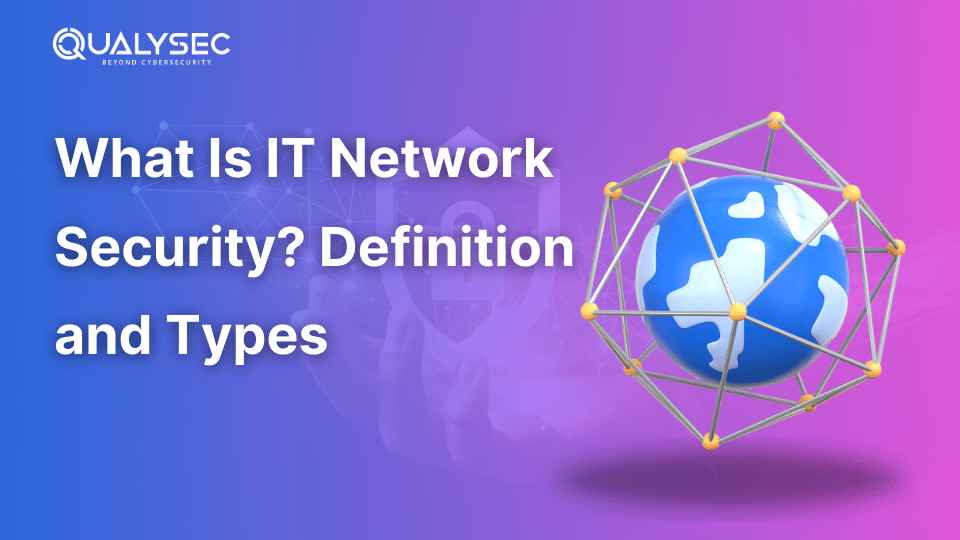IT Network Security: Common Threats and Best Practices
IT network security has become essential for organizations due to the growing use of technology and applications. As a result, protecting the information and devices within a network from cyber attackers is paramount. Additionally, IT network security includes using various methods and tools to prevent unauthorized access, data breaches, and other cyberattacks. Hence, this blog provides deep insights into network security and the risks it faces. In addition, you will learn common network vulnerabilities, types of network security, and best practices. What Is IT Network Security? Information technology network security refers to securing the external network against unauthorized users, and other harmful elements. This involves conducting regular security audits, monitoring network traffic, implementing strong password policies, etc. Additionally, it aims to create a secure network environment where data can be shared and stored without any security risk. IT network security services are crucial to building trust, maintaining smooth business processes, and protecting sensitive information from unauthorized access. What are the Common Threats to IT Network Security? There are various network cyber threats, that have different effects on the network infrastructure. Hence, some of the most common network security threats include: 1. Denial-of-Service (DoS) Attacks DoS attacks bring down a network or a website by overloading it with traffic it cannot handle. Moreover, Distributed Denial-of-Service (DDoS) attacks use multiple systems to enhance their damage. 2. Man-in-the-Middle (MitM) Attacks In an MITM attack, the hacker steps in between the conversation of two targets that should have been confidential. This helps the attacker gain sensitive information and use it for breaches. 3. Insider Threats An insider threat is when a trusted employee, contractor, or organization member deliberately or otherwise threatens a network by breaching its security. 4. Zero-Day Exploits Zero-day vulnerabilities are software vulnerabilities that the vendor has no idea about. Therefore, the exploits of zero-day can be very risky, mainly because there is no patch to the vulnerability during the invasion. 5. Outdated or Unpatched Software Since most software or applications have long lines of code, vulnerabilities in them are common. attackers can use these vulnerabilities to penetrate the network surface and breach other systems. 6. Misconfigured Firewalls Firewalls act as a shield between the internet and your network. They monitor inbound and outbound traffic and choose to allow traffic based on set rules. If it isn’t configured properly, attackers can monitor traffic and deploy attacks on your network. Regular security testing ensures firewalls are set up correctly and blocks unauthorized access. Types of IT Network Security IT network security is complex and a combination of different types of security measures to counter various forms of cyberattacks. These include: 1. Firewalls Firewalls control the interaction between an internal secure network and the external traffic from the internet. They control entry and exit communication according to security standards, blocking all unauthorized traffic while permitting all authorized ones. 2. Intrusion Detection and Prevention systems (IDPS) IDPS scans traffic in the network for unusual and possible security threats. The detection system notifies the administrator about possible threats, while the prevention system acts immediately to prevent these threats. 3. Virtual Private Networks (VPNs) VPNs create safe pathways on the Internet, allowing people to connect to a network from far away while keeping their information private. They assist in securing data communication against leakage and intrusions. 4. Antivirus Software Anti-virus software helps identify and get rid of malicious programs on computers and networks. It should be regularly updated to guard against new threats. 5. Encryption Encryption transforms data into a coded version that can only be unlocked with specific permission or a decryption key. This guarantees security during its transfer to the database and its storage, thus maintaining its confidentiality. 6. Access Control Access control measures prevent unauthorized users from accessing data and resources in a network. This comprises user login, access rights, and right management per the user role. Best Practices for IT Network Security Adhering to standard measures of IT networks can help a company improve the protection of its valuable corporate resources. Here are some essential practices to consider: 1. Software and Hardware Should be Up To Date Updating all the software and hardware is essential as it helps prevent attackers from exploiting their vulnerabilities. The importance of network security lies in regular updates and patches to prevent hackers explore and exploit security weaknesses. 2. Implement Strong Password Policies Develop password policies that create secure passwords different from other accounts and ensure the users change their passwords frequently. Use multi-factor authentication (MFA) to add another layer of security. 3. Conduct Regular Security Audits Regular security assessments are necessary to determine potential weaknesses of the network security systems. These should encompass network evaluations, vulnerability tests, and penetration tests. 4. Back Up Data Regularly It’s a good idea to make copies of your data so you can get it back in the case of a breach. Keep these copies in a different place and check regularly to make sure you can restore them easily. 5. Monitor Network Traffic Constantly monitor network traffic for any suspicious activity and threats. Intrusion Detection and Prevention systems (IDPS) and security information and event management (SIEM) systems can help monitor and detect a particular incident in real time. Advanced IT Network Security Strategies For companies looking to enhance their IT network security beyond basic steps, there are advanced strategies and methods they can use. These strategies include: 1. Threat Intelligence Threat intelligence requires acquiring and processing information regarding current and future threats. The information provided can help stop hackers from breaking in, as organizations can spot potential vulnerabilities ahead of time. 2. Behavioral Analytics Behavioral analytics refers to the processes of observing user activity and recognizing new patterns that indicate a security threat. These behavior patterns are valuable in identifying suspicious or unusual activities in an organization. 3. Zero Trust Architecture The Zero Trust model assumes that threats could come from both outside and inside. Therefore, there must be validation for every demand. This approach requires partitioning the network and




